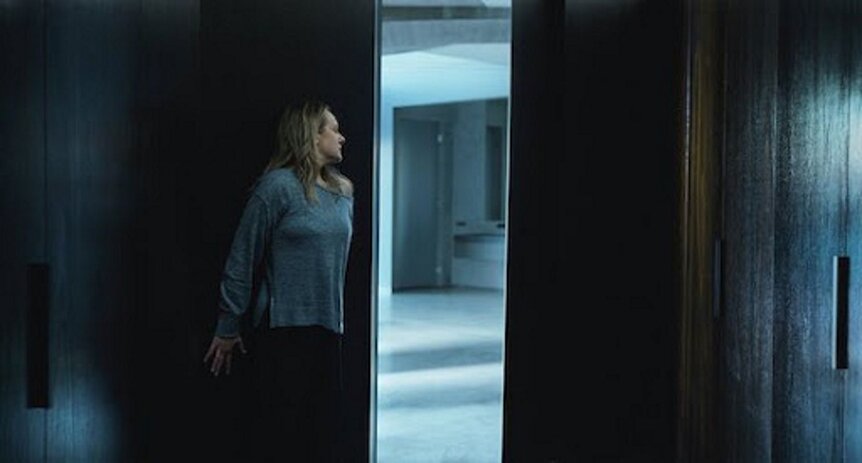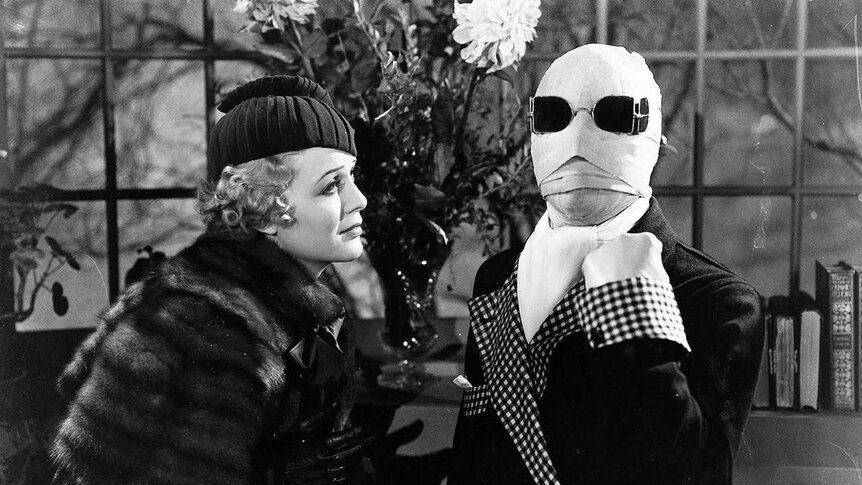Create a free profile to get unlimited access to exclusive videos, sweepstakes, and more!
How the 2020 reboot reimagined 'The Invisible Man' as a story about women
Looking back at how the excellent 2020 reboot flipped the formula on its head.

The Invisible Man has been a lot of things throughout his existence — a science fiction hero, the mascot for Scotch Tape, a Batman: The Animated Series guest star, a quirky comic character, and much, much more. Yet perhaps his true calling is that of a villain, work-obsessed and willing to hurt whoever gets in his way if it means proving his genius to the world.
In the original story, the Invisible Man is someone whose insecurities have turned him into a monster well before he gains his abilities and uses his newfound upper hand to hurt people. Rather than focusing on his arc as a man corrupted by power, the newly released reinterpretation by director/writer Leigh Whannell refocuses the lens of the story on the people he terrorizes. That simple detail is what makes this one of the great reimaginings of the Universal horror film canon.
RELATED: Stream The Invisible Man right now on Peacock
The history of Invisible Man
In the original novel, the Invisible Man was a man named Griffin who appeared to have no personal relations outside of his work. This image of a recluse and misanthrope changed with the film adaptation, in which the main character's name was changed to Jack and he experimented on himself in hopes of proving himself capable of supporting his fiancee. The morality of the Invisible Man as a protagonist has buoyed back and forth over time, for the better (like the League of Extraordinary Gentlemen movie) as well as the worse (like the League of Extraordinary Gentlemen comic).
In the new film, the Invisible Man is still a scientist who specializes in optics, now named Adrian Griffin (Oliver Jackson-Cohen). True to the name, we barely see Adrian — except when he is exploding with rage or actively attempting to influence his ex and everyone else into believing that he was a victim. As with many manipulators, his emotional core is completely missing, and it is his sense of ownership over others that takes center stage.
Shaking up the Universal monster formula
At apparent odds with the wacky mad scientist vibe of the Griffin character, the women of the Invisible Man franchise have been notably bland and unthreatening. In the original film, Jack's fiancee Flora is given essentially no background or motivation outside of wanting to help him. The Invisible Man of the League of Extraordinary Gentlemen comic is an obvious misogynist who assaults Mina Harker, while Sebastian Caine of Hollow Man is an unrepentant rapist and the female characters are essentially nothing more than foils to his desires. Even the Invisible Woman film from 1940 treats the titular character as a guest star in her own movie and completely disarms the inherent terror of the concept.
Meanwhile, Elisabeth Moss' Cecilia Kass is the central protagonist of the remake. The film begins with a quiet but strangely powerful beat — her, awake in bed, slowly, calmly pushing her lover's possessive arm away. She flees his home and distances herself from him, only to be drawn back in against her will. While attempting desperately to free herself from his intrusion on her life, her moments of happiness are ultimately brief reprieves from an overriding worry that he will find her again. This is the true horror of the film, and it requires no supernatural subplot to become immediately effective for anyone that has ever been in that position before.
Though we know that Cecilia was a successful architect before she met Adrian, the extent to which he absorbed her into himself is obvious when she discusses any element of her life over the last several years. In an almost throwaway moment, she notes that Adrian was attempting to trap her with a pregnancy, which she admits would have sealed her fate and left her forever unable to leave. Again, this is a real tactic used by many abusers to exert control over their lovers.
Elizabeth Moss brings it home
For her part, Moss communicates a lot about the physical manifestations of domestic violence without using any words at all. When she finally builds up the strength of will to leave the house for the first time in weeks, her eyes dart back and forth and she seems to try to sink into herself or to become invisible.
More than anything, the new film grants space for a great deal of reflection in regard to real-life victims of stalking, who are so seldom given validation or recognition in the world of genre. Even when stories are told, they are just as often told from the viewpoint of the stalker. The triumph of this remake is that it shines a light on something that people are all too happy not to think about. Many victims of stalking never see the justice that Cecilia fights for throughout the movie, but the trauma and gaslighting she experiences are sadly all too real.
Though it is Cecilia's resilience that will be widely considered the feminist core of The Invisible Man, it is important to note that a victim's toughness is not an indicator of their value and that people of all makes and models can fall victim to domestic abuse and sexually motivated violence. Perhaps more important than Cecilia's strength is the movie's inherent commentary on the seeming impossibility of a return to normalcy that many people feel when attempting to flee abusers. Cecilia does everything correctly — she cuts ties, gets somewhere safe, and surrounds herself with people who love her, but in the end it is not enough and it does not protect her from the man who has decided that he will possess her at all costs. Many people who have attempted to flee from a stalker, only to discover how little protection is offered to victims by our judicial systems, will already be well aware that there is no need for any brilliant scientific breakthrough or a devious master plan for an abuser to render their victims invisible.





























